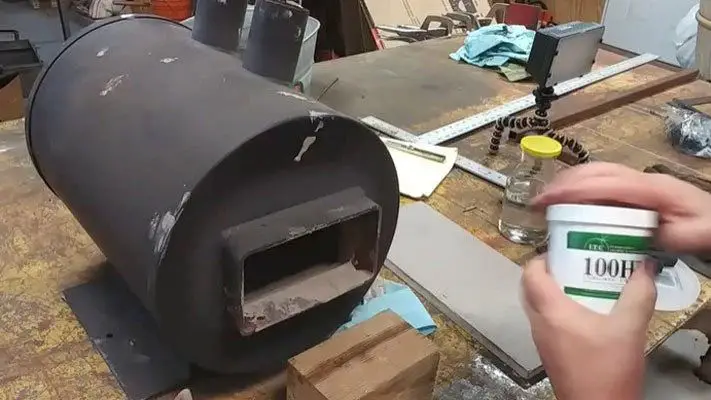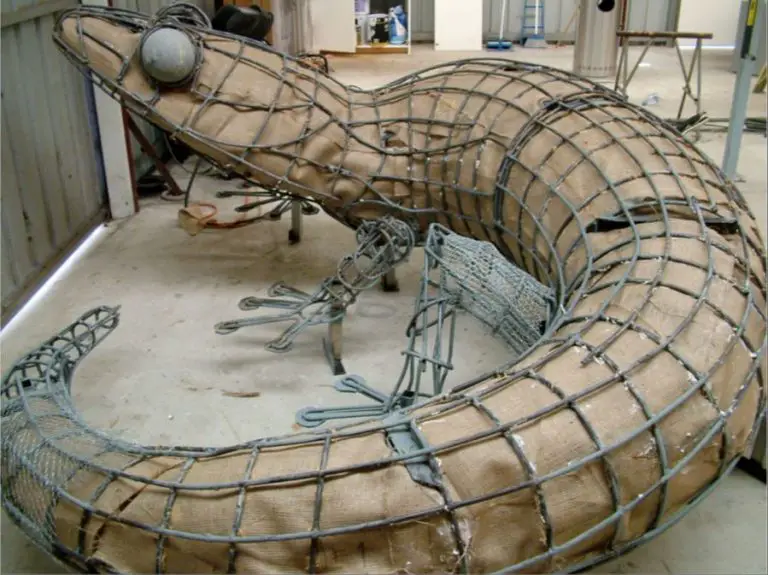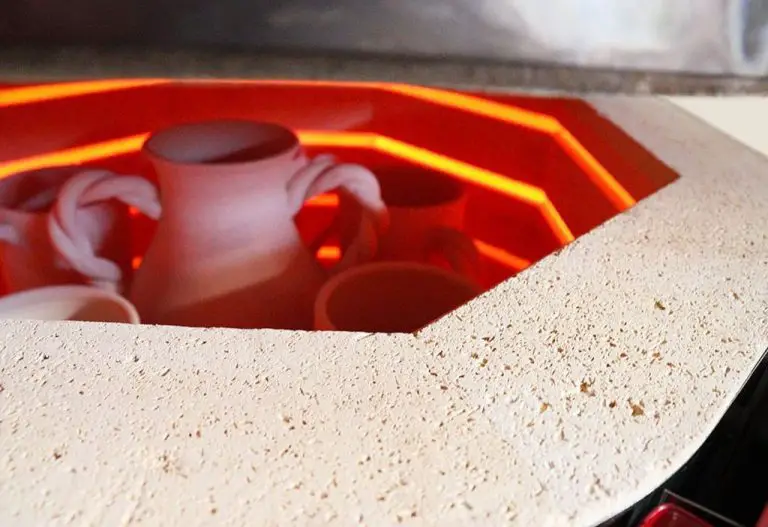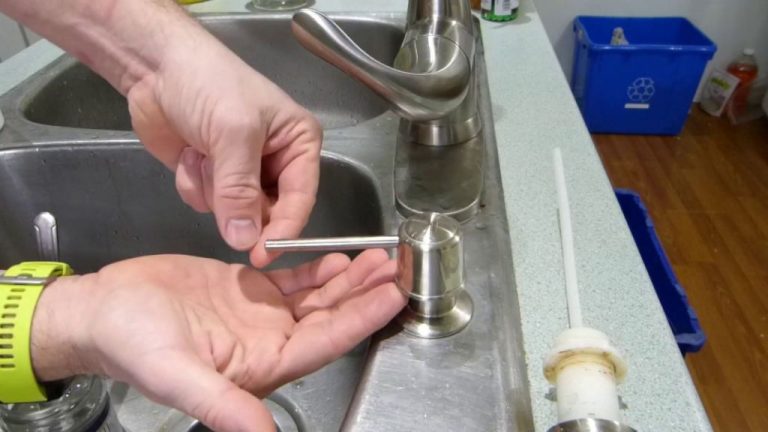How Thick Can You Pour Refractory Cement?
What is Refractory Cement?
Refractory cement is a high temperature heat resistant cement used for lining fireplaces, fireboxes, furnaces and kilns. It is able to withstand temperatures up to 1200°C and beyond without breaking down. There are several major types of refractory cements:
Castable refractory cements are used for monolithic refractory constructions. They consist of dry combinations of hydratable high alumina cements and finely ground refractory aggregates like fireclays or chamottes. When mixed with water, castable refractory cements form a trowelable mix that can be shaped into various forms. They are often used as a backup lining material behind firebricks.
High alumina cements are manufactured from limestone and bauxite or aluminous clays. They contain over 40% alumina content and are known for their high early strength and refractoriness.
Calcium aluminate cements contain a minimum of 70% aluminate monocalcium aluminate (CA). They are noted for good thermal spalling resistance.
Refractory mortars are pre-blended mixtures of refractory aggregates and binders that are used to bond refractory bricks, tiles and other shapes together. They are commonly used to line fireboxes, smoke chambers and chimneys.
Some key uses and applications of refractory cements include:
- Lining kilns or furnaces
- Creating monolithic refractory linings
- Installing fireplace and chimney components
- Coating metal surfaces like boilers and incinerators
- Making refractory shapes like balls and tiles
Recommended Thickness
Refractory manufacturers provide guidelines for the recommended thickness of refractory cement based on the application. According to Rutland, the recommended thickness for their Castable Refractory Cement products is a minimum of 1/4″ and a maximum of 1.5″ [1]. For standard masonry joints using Rutland’s Refractory Cement, they recommend a thickness of 1/4″ or less [2].

The standard thickness when using refractory cement in a foundry or forge application is around 1″-2″ thick. This provides sufficient insulation for withstanding the high heat while not being overly thick and heavy. For furnace and boiler linings, a thickness of 1″-1.5″ is commonly used.
When using refractory cement for firebrick joints, a thin layer of 1/8″ – 1/4″ is standard. Thicker layers are more prone to cracking from expansion and contraction.
Maximum Thickness
Refractory cement has recommended maximum thicknesses that should not be exceeded. Going beyond the maximum recommended thickness can lead to cracking, spalling, and failure of the refractory cement. Some factors that affect the maximum recommended thickness include:
Type of refractory cement – Some refractory cements are designed for thicker pours than others. For example, castable refractory cement is often recommended for a maximum thickness of 1.5-2 inches, while other types like low cement refractory castables can go up to 4 inches thick.[1]
Reinforcement – Adding reinforcement fibers like ceramic blankets or wire mesh can allow slightly thicker pours without cracking.[2]
Curing conditions – Proper moisture control and curing temperatures during setting are critical. Curing too quickly can cause cracking in thick sections.
Substrate – The underlying surface must be strong enough to support thick refractory without cracking or spalling. Uneven substrates increase risk.
Overpouring refractory cement beyond the recommended thickness risks cracking, spalling, and failure. As thickness increases, the cement is harder to fully wet out and cure properly. Thick sections will dry slower, increasing risk of moisture pockets that can cause steam explosions under heat. Maximum thicknesses account for these risks, so it’s critical to follow manufacturer guidelines.[3]
Substrate Prep
Proper preparation of the substrate is crucial before applying refractory cement. The substrate surface must be clean, dry, and roughened up to allow the cement to adhere properly. Any oil, grease, loose particles, or other contaminants must be removed, or they can prevent the cement from bonding.
The surface should be cleaned thoroughly with a degreasing agent or solvent. All loose material and any previous coatings need to be chipped and scraped away until only the bare substrate remains. The surface can then be roughened up using a grinding wheel, chisel, or acidic etch. This provides a rough profile for the refractory cement to grab onto and creates tiny grooves and pores for a mechanical bond. Proper substrate preparation helps ensure maximum strength, durability, and heat resistance in the finished application.
Mixing
When mixing refractory cement, it is crucial to use the proper water-to-cement ratios and mixing techniques to achieve optimal strength and durability. According to experts, the ideal water-to-cement ratio is around 0.15-0.18 gallons of water per pound of refractory cement. Using too little water can prevent the cement from properly bonding and curing, while too much water will weaken the cement and reduce its refractory properties.
The proper mixing equipment is also important for accurate water measurement and thorough blending of the cement. Experts recommend using a paddle mixer attached to a heavy-duty 1/2-inch drill for optimal results. Some key tips include:
- Always add the water to the cement gradually while mixing.
- Continue mixing for 3-5 minutes once all materials are incorporated to ensure proper blending.
- Scrape the sides of the mixing container periodically while blending.
- Do not re-temper the mix by adding more water after it has begun curing.
Following the manufacturer’s instructions for water amounts and using robust mixing equipment will help produce refractory cement that fully cures to achieve maximum strength and heat resistance.
Pouring
When pouring refractory cement, it’s important to use proper technique to ensure even distribution and avoid air pockets. Pour the mixed refractory in a steady, continuous stream from one side to the other. Move the flow around to spread it evenly. Tapping the form lightly with a rubber mallet can help vibrate the refractory and settle it into place.
Refractory cement is commonly poured into custom forms and molds to create fireplace surrounds, forges, kilns, and other structures. Build forms using sturdy, non-combustible materials like firebricks or ceramic fiber board. Seal forms to prevent leakage. Apply a release agent so the hardened refractory releases easily. Brace tall or complex forms securely.
Pour a little at a time, no more than a few inches deep per lift. Allow each layer to cure partially before adding the next. Too much refractory poured at once can slump or apply too much pressure on forms. Take care to avoid air pockets that can weaken the finished product.
Curing
Proper curing is essential for refractory cement to reach its maximum strength and heat resistance. The curing process allows excess water to evaporate from the cement so it can set properly.1 Refractory cement manufacturers recommend allowing the cement to cure for at least 24-48 hours before exposing it to high temperatures.2
During the curing period, the cement should be kept damp but not saturated. Light misting or covering with plastic is recommended. Allowing the cement to completely dry out before it has cured will weaken it and cause cracking. The curing area should be above 50°F if possible.
It can take up to 28 days for refractory cement to reach maximum strength. Allowing longer cure times when possible will result in a stronger, more heat resistant installation. Always refer to the manufacturer’s instructions for recommended cure times.
Testing
Proper testing of refractory cement is critical for quality control and ensuring the material meets specifications. Some common testing methods include:
- Ultrasonic testing – Used to measure thickness and detect any voids or gaps in the refractory lining. An ultrasonic transducer emits high frequency sound waves which bounce off the back of the refractory and return to the transducer. The time delay is used to calculate thickness.
- Core drilling – Extracting a core sample allows direct measurement of thickness. It also enables examination of the microstructure.
- X-ray diffraction – Used to identify the chemical compounds and mineral phases present.
- Modulus of rupture – A bending test that determines the cement’s strength.
- Pyrometric cone equivalent (PCE) – Involves heating up small standardized pyrometric cones made with the refractory to measure its refractoriness or ability to withstand high temperatures.
Strict quality control testing should be carried out at all stages of production and application according to ASTM standards or other specifications. Samples of the dry mix, the wet mix, and the cured refractory should be tested. This ensures the product has been properly formulated and applied.
Troubleshooting
Here are some common problems that may arise when pouring refractory cement and how to fix them:
Cracking – Refractory cement can crack while curing or after firing. This is often caused by pouring too thick, improper curing, or rapid heating/cooling. To prevent cracking, follow recommended pour thickness and curing procedures. If cracks form, chisel out the affected area and re-pour refractory cement in thinner layers.
Crumbling – If the refractory cement crumbles or doesn’t harden properly, the mix ratio may be off. Ensure the proper amounts of water and refractory are mixed thoroughly. Low temperatures during curing can also inhibit hardening. Maintain 60-90F during the curing process.
Spalling – Refractory spalling or flaking off in spots is usually caused by moisture penetrating the cement during curing or firing. Allow proper cure times before use and make sure the area is fully dry before lighting a fire. Protect outdoor installations from rain during curing. Re-patch any spalled areas.
Use a Refractory Manufacturers Association (RMA) recommended refractory cement and follow all mixing, pouring, and curing directions to avoid issues. Test a small batch before pouring large amounts. If problems persist, contact the manufacturer for troubleshooting advice.
Safety
When handling and working with refractory cement, it’s important to take proper safety precautions. Refractory cement contains silica, which can cause silicosis when inhaled over time. It’s critical to wear proper personal protective equipment (PPE) when mixing and pouring refractory cement.
The Occupational Safety and Health Administration (OSHA) recommends wearing safety goggles, protective gloves, and an N95 facemask when working with refractory cement to avoid skin contact and inhalation of silica dust. A respirator may be required for prolonged exposure. Work should be done in a well-ventilated area to allow silica dust to dissipate.
Clothes should fully cover skin and bewashable or disposable. Work clothes contaminated with refractory cement should be removed before leaving the work area to avoid spreading silica dust. Proper cleanup by wet sweeping and/or vacuuming using a HEPA filter is essential after working with refractory cement. Contaminated clothing should be washed separately from other laundry.
Refractory cement bags include safety warnings that should be reviewed prior to use. OSHA and manufacturer guidelines for safe handling and PPE should always be followed closely when working with refractory cement to minimize health risks.





